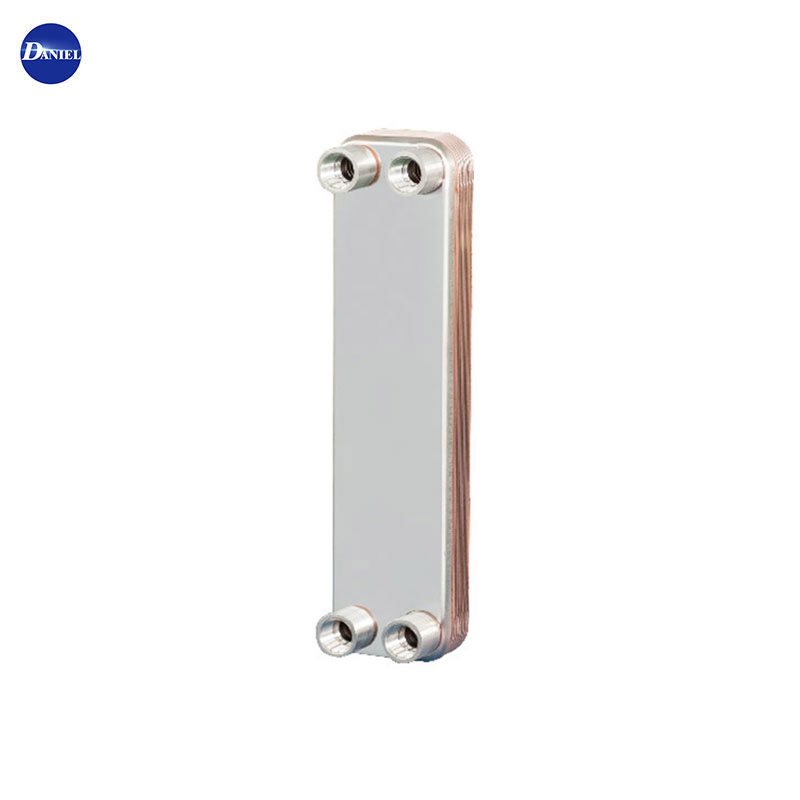Construction of Swep Brazed Plate Heat Exchangers
2024-05-29
A Swep brazed plate heat exchanger is a type of compact heat exchanger used for transferring heat between two fluids in a wide range of applications, including HVAC systems, refrigeration, industrial processes, and renewable energy systems. Swep is a well-known manufacturer of brazed plate heat exchangers, known for their high-quality products and innovative designs. Here's an overview of Swep brazed plate heat exchangers, including their construction, working principle, benefits, and applications:
Construction of Swep Brazed Plate Heat Exchangers:
1. Brazed Plate Design: Swep brazed plate heat exchangers consist of multiple stainless steel plates brazed together in a stack. The plates are stamped with corrugated patterns to create flow channels for the two fluids.
2. Brazing Process: The plates are assembled and brazed together using a high-temperature brazing process, typically with copper or nickel-based brazing material. This creates a durable and leak-proof bond between the plates.
3. Flow Channels: The alternating arrangement of plates creates flow channels for the two fluids, allowing them to pass through the heat exchanger in counterflow or crossflow configurations.
4. Gasket-Free Design: Swep brazed plate heat exchangers feature a gasket-free design, eliminating the risk of gasket failure and leakage. The brazed construction provides a robust and reliable sealing solution.
5. Compact Size: Brazed plate heat exchangers have a compact and lightweight design compared to traditional shell-and-tube heat exchangers, making them space-saving and easy to install in various applications.
Working Principle of Swep Brazed Plate Heat Exchangers:
1. Fluid Circulation: Two fluids, known as the hot side and the cold side, flow through the heat exchanger in separate channels formed by the corrugated plates.
2. Heat Transfer: Heat is transferred between the two fluids through the thin walls of the plates. The hot fluid gives up heat to the cold fluid as they pass in close proximity within the heat exchanger.
3. Efficient Heat Exchange: The turbulent flow induced by the corrugated plates promotes efficient heat transfer between the fluids, maximizing heat exchange efficiency.
4. Counterflow or Crossflow: Depending on the configuration of the heat exchanger, the fluids may flow in counterflow (opposite directions) or crossflow (perpendicular directions), optimizing heat transfer performance.
Benefits of Swep Brazed Plate Heat Exchangers:
1. High Efficiency: Swep brazed plate heat exchangers offer high heat transfer coefficients and low pressure drops, resulting in efficient heat exchange and minimal energy consumption.
2. Compact Design: The compact and lightweight design of brazed plate heat exchangers saves space and installation costs compared to traditional heat exchanger designs.
3. Durable Construction: The brazed construction of Swep heat exchangers provides durability, reliability, and long-term performance with minimal maintenance requirements.
4. Wide Range of Applications: Swep brazed plate heat exchangers are suitable for a wide range of applications, including heating, cooling, and heat recovery in residential, commercial, and industrial systems.
5. Versatility: Swep offers a variety of brazed plate heat exchanger models with different plate sizes, flow capacities, and configurations to meet the specific requirements of various applications.
Applications of Swep Brazed Plate Heat Exchangers:
1. HVAC Systems: Brazed plate heat exchangers are commonly used in heating, ventilation, and air conditioning (HVAC) systems for heat recovery, domestic hot water production, and hydronic heating.
2. Refrigeration: Swep heat exchangers are utilized in refrigeration systems for evaporators, condensers, and heat pump applications, providing efficient heat transfer for cooling and refrigeration processes.
3. Industrial Processes: Brazed plate heat exchangers are employed in industrial applications such as chemical processing, food and beverage production, power generation, and oil and gas refining for heating, cooling, and process heat exchange.
4. Renewable Energy Systems: Swep heat exchangers play a key role in renewable energy systems, including solar thermal, geothermal, and heat recovery systems, where they facilitate the transfer of heat between renewable energy sources and building systems.
5. Domestic Hot Water: Brazed plate heat exchangers are used in residential and commercial buildings for producing domestic hot water, providing efficient and reliable heat transfer for potable water heating systems.
Conclusion:
Swep brazed plate heat exchangers are versatile and efficient devices used for transferring heat between fluids in a wide range of applications. With their compact design, high efficiency, and durable construction, Swep heat exchangers offer reliable performance and cost-effective solutions for heating, cooling, and heat recovery needs in residential, commercial, and industrial settings. Whether used in HVAC systems, refrigeration, industrial processes, or renewable energy systems, Swep brazed plate heat exchangers provide efficient heat transfer and optimal thermal performance for various applications.



